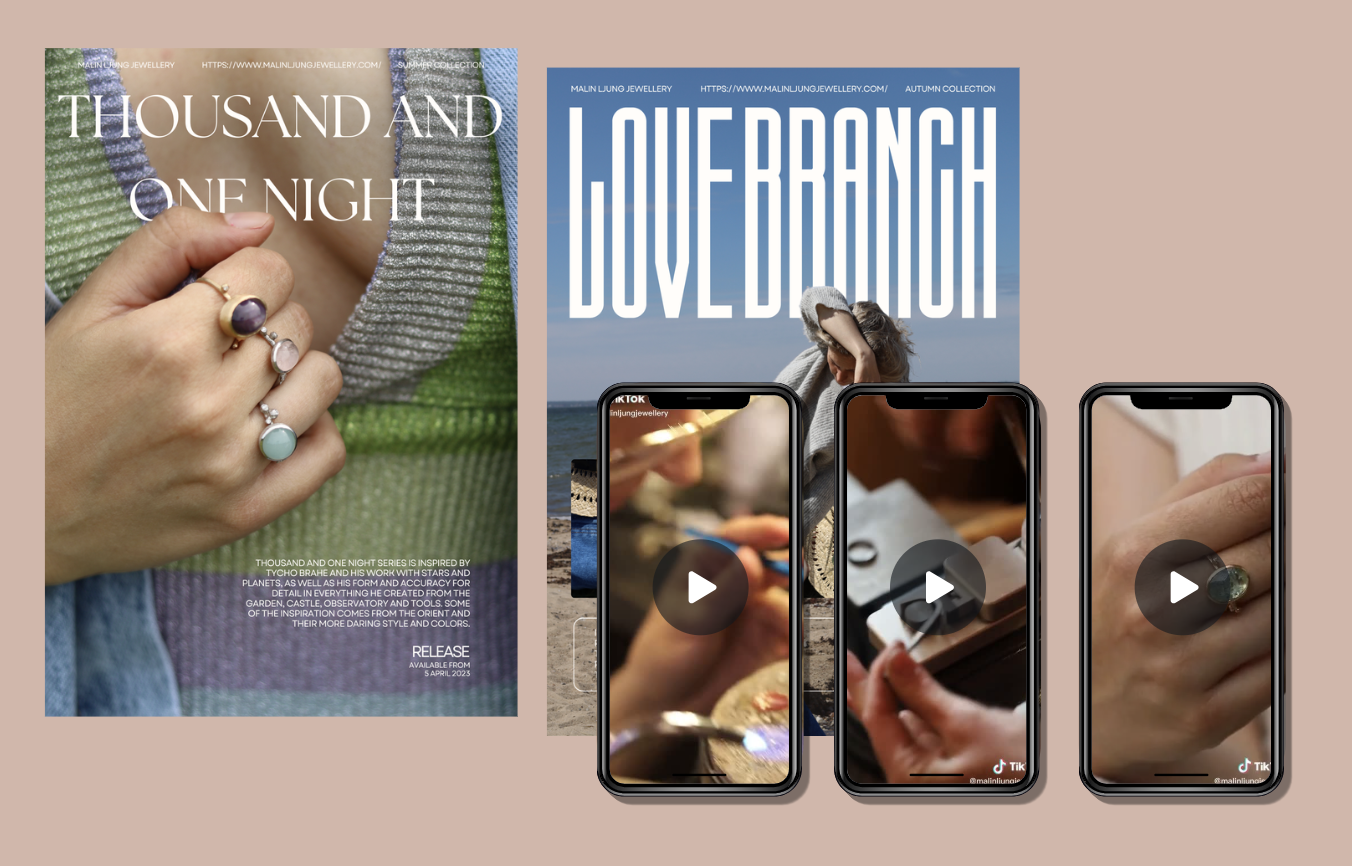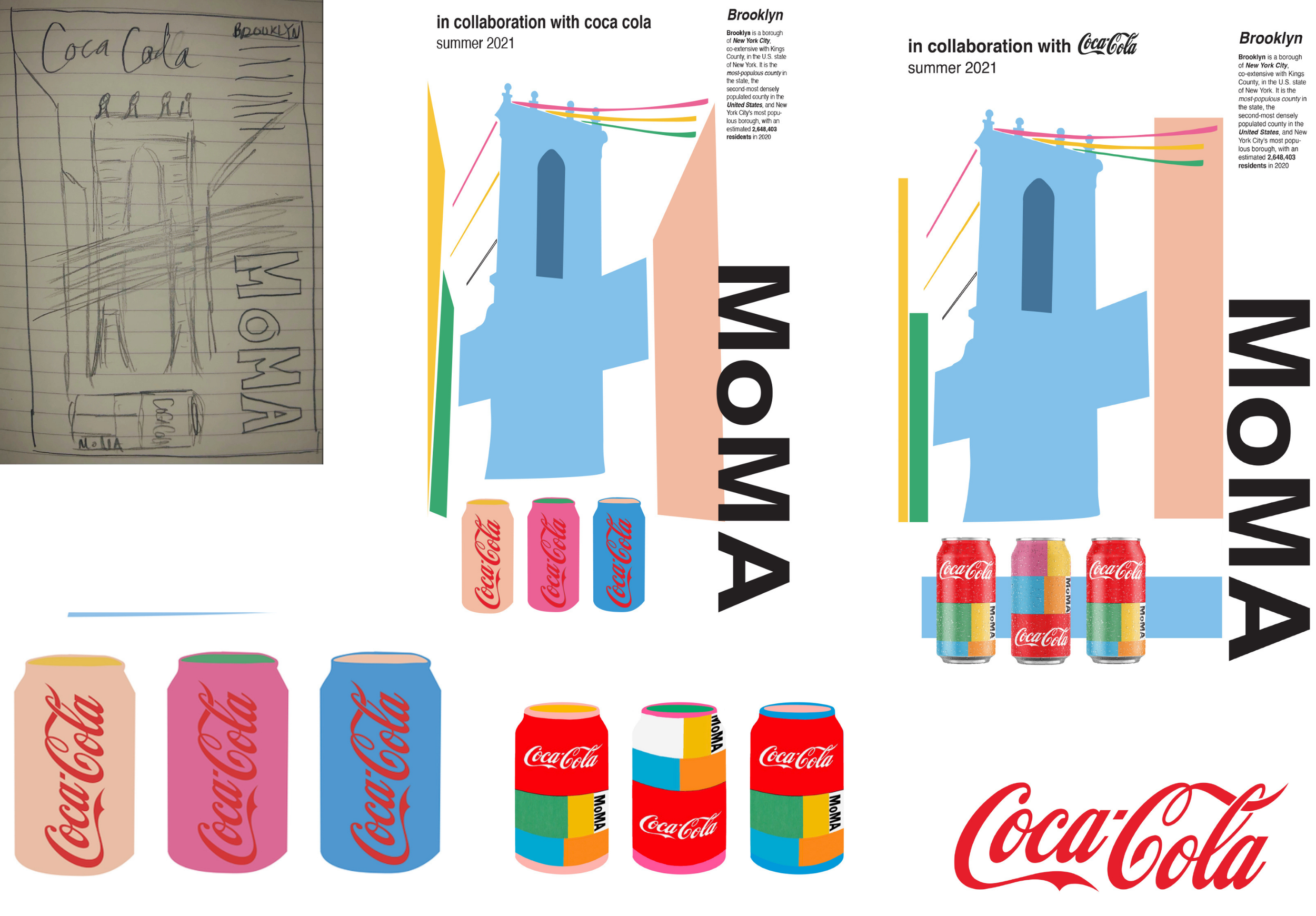
Coca-Cola x MoMA Collaboration – Art Meets Everyday Design
Role: Concept Designer · Packaging Design · Experience Design
Tools: Illustrator · Photoshop · InDesign · 3D Mockups
This project was part of my AP Degree, where the brief challenged us to create a conceptual limited-edition Coca-Cola repackage in collaboration with another brand that shared similar values.
After analyzing Coca-Cola’s core essence - optimism, connection, and universality - we identified MoMA (The Museum of Modern Art) as the perfect partner. Both brands champion creativity, accessibility, and cultural influence, yet stem from contrasting worlds: one deeply embedded in commercial culture, the other a symbol of artistic innovation.
The collaboration concept aimed to bridge art and everyday life, transforming a global icon into a collectible design piece that celebrates creativity as a shared human experience.

What I Did.
The Challenge
I chose to explore a collaboration between Coca-Cola and The Museum of Modern Art (MoMA) - two global icons representing creativity, culture, and optimism in different forms. The challenge was to fuse Coca-Cola’s heritage-driven expression with MoMA’s grid-based modernism, creating a design that transcends commercial packaging and becomes a collectible art object.
The project also required defining a clear message, visual identity, and launch strategy - including two sketched communication examples - to show how the collaboration could live across different media.
The Approach
I structured the project into distinct, iterative phases to balance research, creative exploration, and communication strategy.
Empathize & Define:
I began by analyzing Coca-Cola and MoMA using the Brand Essence Wheel to decode their values, tone, and design DNA.
Coca-Cola embodies connection, optimism, and shared experiences.
MoMA represents creativity, openness, and cultural inclusivity.
Through this analysis, I identified a shared foundation in accessibility and cultural impact, forming the conceptual base for the collaboration.
The core message was defined as:
“To remind locals that their neighborhoods are pieces of art - just like the ones found at MoMA.”
Ideate & Plan:
Building on this idea, I explored how the collaboration could visually express that message. Using MoMA’s modular, grid-based modernism as a structural principle and Coca-Cola’s red and organic curvature as emotional anchors, I created early sketches and packaging mockups.
Each of New York’s five boroughs, Manhattan, Brooklyn, Queens, The Bronx, and Staten Island, was represented through unique color accents and layout variations, symbolizing diversity within unity.
Prototype & Design Refinement
I developed can prototypes that merged both brands’ identities. The design combined MoMA-inspired geometric compositions with Coca-Cola’s fluid forms, dynamically changing as the can rotated.
The visual outcome balanced minimalism and playfulness, turning a simple can into an object that could exist both in a fridge and a gallery.
Promotion Strategy
Guerilla Marketing - Glass Box Installation
5 boxes would be spread out across the different boroughs, each at a distinct and localised location. The boxes are conceptually large mirrors where consumers can buy drink
The idea is that the large mirrors will show how beautiful the boroughs.
The box is decorated with branding from the collaboration and incentives for posting the Box on SoMe.
Promotion Strategy
Pop-Up
MoMA museum and the MoMA Design Store are both located in Manhattan.
The main pop up event would be held at the Design Store, where customers would be able to get the limited edition Coca-Cola can.
It's a popular destination both for art enthusiasts, locals and tourists.
The Design Store is connected to the MoMA so consumers would be inclined to go to the museum.
Solution
The Coca-Cola x MoMA Collaboration bridges the worlds of commercial branding and contemporary art through a unified, concept-driven design.
By combining Coca-Cola’s human warmth with MoMA’s intellectual modernism, the limited-edition packaging transforms an everyday object into a symbol of urban creativity.
The design and launch concept demonstrate:
The ability to decode and merge two brand identities using analytical frameworks.
How packaging can serve as a medium for storytelling and cultural commentary.
This project highlights how thoughtful brand collaboration can go beyond aesthetics - inviting people to see art, culture, and connection in the most familiar of places.
Frameworks used
Brand Essence Wheel - Coca-Cola
Brand Essence Wheel - MoMA
Rhetorical Compass
Explore my latest work.
-

Concept Development & Graphic Design - TEKLA
The project began with a question: What if the TEKLA experience started before the first touch of the product? The final design presents a calm and tactile packaging experience that reflects TEKLA’s values of stillness, simplicity, and care.
-

Content Creation - Malin Ljung Jewellery
Working with Malin Ljung Jewellery, I translated handcrafted design into visual stories. Through photography, video, and campaign content, I captured the brand’s essence — highlighting its artistry, detail, and sustainable spirit.
-

Brand Book - Emendo Consulting Group
I led a full brand refresh for Emendo Consulting Group, creating a cohesive and scalable visual identity that unified the brand across all channels and empowered teams to design with consistency.
-

Concept Development - Djerf Avenue X Modibodi
This project reimagines period care as empowering, stylish, and sustainable. Through a collaboration between Djerf Avenue and Modibodi, I explored human-centered design to challenge stigma, reduce waste, and create visuals, and a campaign that celebrate the female body while promoting eco-conscious choices.
-

Content Creation - Emendo Consulting Group
I craft visuals that balance creativity with strategy. From brand identities to full campaign systems, my designs are consistent, scalable, and built to make an impact. At Emendo Consulting Group, my brand refresh led to a 132% growth in LinkedIn followers and a 20.5% engagement rate — proof that design can drive business growth.
-

New Website - Emendo Consulting Group
Emendo’s previous website struggled to reflect the company’s expertise and structure, with eight business areas and no unified identity. After establishing a solid brand foundation, I led a complete redesign using the Design Thinking process. The result was a streamlined, intuitive, and trustworthy digital experience that aligned stakeholder needs and clearly represented Emendo’s capabilities.









